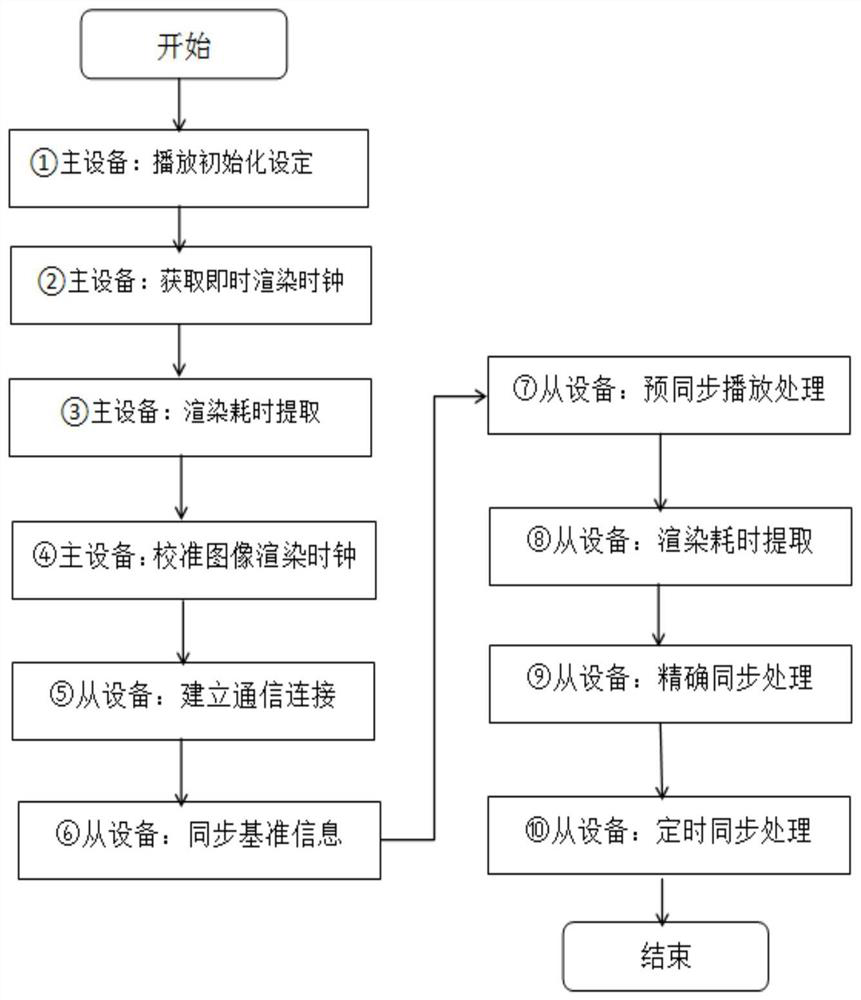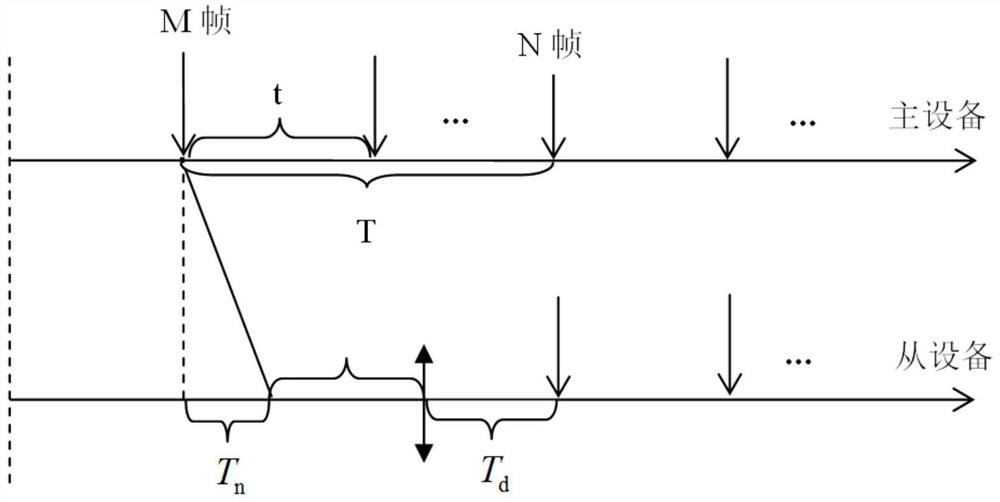Method for synchronously displaying multi-screen playing pictures
A technology for synchronizing display and screen, applied in color TV parts, TV system parts, TV and other directions, can solve the problems of different back-end image rendering time, hardware differences, and the inability to achieve accurate synchronization of long-term playback images. , to achieve the effect of saving hardware procurement costs, overcoming use limitations and inaccurate picture synchronization, large market value and application prospects
- Summary
- Abstract
- Description
- Claims
- Application Information
AI Technical Summary
Problems solved by technology
Method used
Image
Examples
Embodiment 1
[0086] In this embodiment, a scene of synchronously playing and displaying multiple TVs of different models in a home appliance store is taken as an example for illustration. There are various models and sizes of TVs arranged on the booths of home appliance stores. These TVs have different configurations and parameters such as chips, screens, and picture quality.
[0087] It is set that the home appliance store is equipped with a local area network, and each TV device is connected to the local area network through wired or wireless methods;
[0088] It is set that the video resource to be played and displayed has been copied to the SD memory card of the TV, and the ID of the video resource remains the same;
[0089] Set the frame rate of the video to 25 frames per second, and the frame interval time t=40ms;
[0090] Set TV A as the master device, and other TVs as slave devices;
[0091] The method for synchronously displaying multi-screen playback pictures in this embodiment...
Embodiment 2
[0104] This embodiment takes the synchronous playback scene of the multi-screen advertising machine as an example. The multi-screen advertising machine has multiple screens, and each screen is connected to a host, and the hosts are physically connected through serial ports;
[0105] Compared with Embodiment 1, the difference of this embodiment is mainly that the communication connection modes of the master and slave devices are different, and the master and slave devices in this embodiment are connected and communicate through serial ports. In addition, the steps and process of this embodiment are completely consistent with those of Implementation 1; through the precise synchronization of multi-device playback images, the full synchronization of the playback images on multiple screens of the advertising machine is realized.
Embodiment 3
[0107] In this embodiment, a scene of multi-screen splicing and synchronous playback is taken as an example for illustration. Multiple independent display devices are spliced into one large-screen device, which is used in many occasions.
[0108] In this embodiment, each independent display device has an independent player, and each device plays a different video resource independently. There is a premise that all video resources have exactly the same time axis, and Comply with strict video frame alignment.
[0109] Compared with Embodiment 1, the difference of this embodiment is that the video sources played by each device are different, and the rest of the processing steps are completely the same, so details are not repeated here.
PUM
 Login to View More
Login to View More Abstract
Description
Claims
Application Information
 Login to View More
Login to View More - Generate Ideas
- Intellectual Property
- Life Sciences
- Materials
- Tech Scout
- Unparalleled Data Quality
- Higher Quality Content
- 60% Fewer Hallucinations
Browse by: Latest US Patents, China's latest patents, Technical Efficacy Thesaurus, Application Domain, Technology Topic, Popular Technical Reports.
© 2025 PatSnap. All rights reserved.Legal|Privacy policy|Modern Slavery Act Transparency Statement|Sitemap|About US| Contact US: help@patsnap.com


